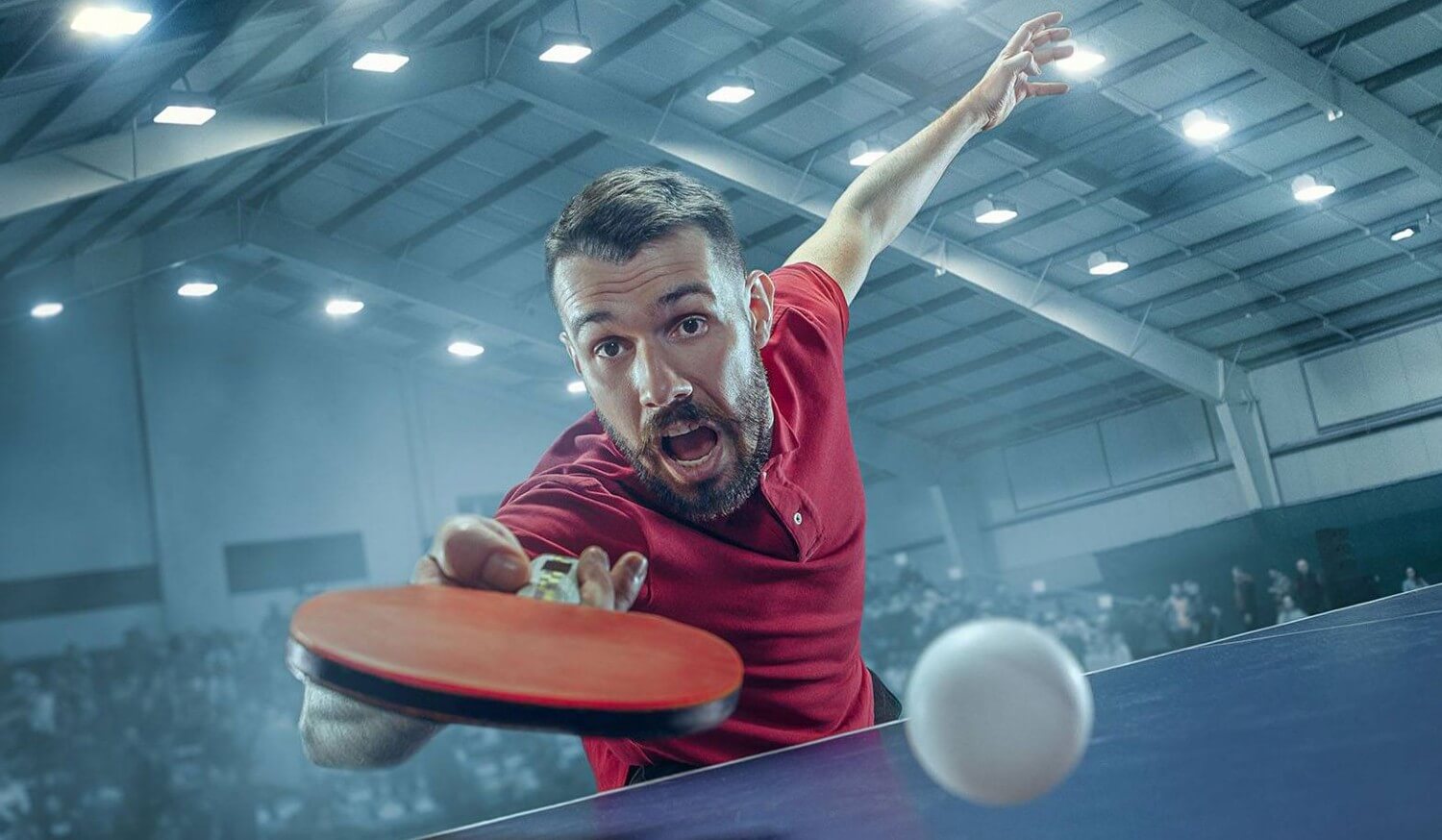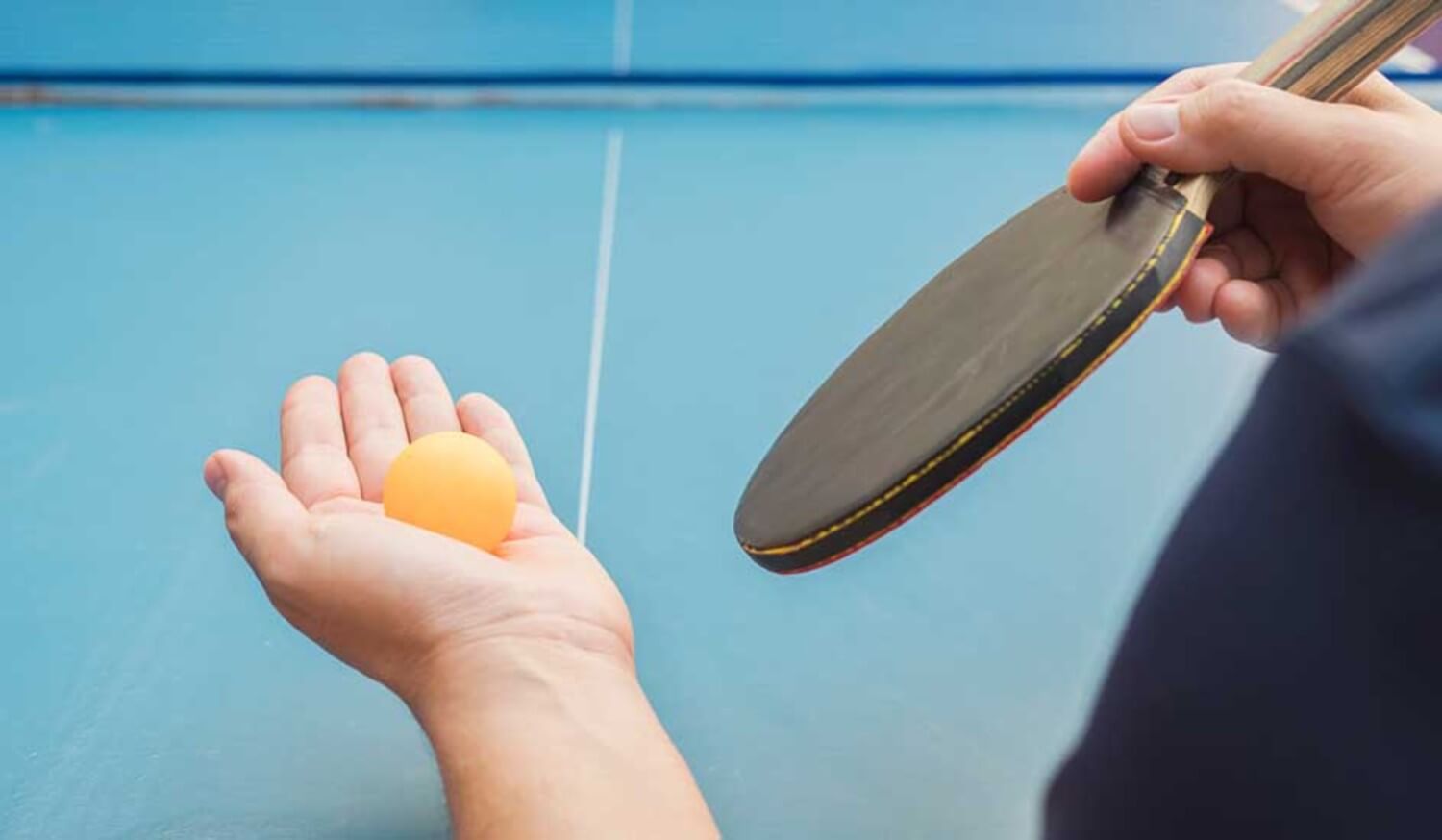You can’t perfect your table tennis skills without perfecting your grip. There are many ways to hold a table tennis paddle when playing. Some gripping styles come naturally, and some are manifested. So, this article will explain all the significant types of grips in table tennis sport.
A paddle is the main constituent of this game. So, gripping your paddles rightly holds excellent significant performance.
It is essential to have some knowledge about the various grips in the table tennis game. Implementing the proper grip can improve your playability. It may also enhance your skills level in the game. Therefore, learning these grips will improve your understanding of the game.
Various Types Of Grips In Table Tennis
Content Summery
[su_note note_color=”#AFEEEE”]
We have recently reviewed the top-rated table tennis rubbers and also the best table tennis table combos. But this equipment will have no value if you are not good at playing it. So, let’s get deep into some of the important grips we practice in table tennis games![/su_note]

[su_note note_color=”#DAA520″]
Penhold Grip
[/su_note]
[su_note note_color=”#c6e5fd”]
This is one of the vital grip styles in the table tennis game. Players hold the paddle in pencil style. It highly resembles the way of having a pen in your hand. Most players find it very effective. So, it helps a lot to many players improve their playability in table tennis matches.
You can have top-rated table tennis training sets to practice these grips. But before that, let’s go about different styles that are in practice when we talk about Penhold grip.
Chinese Penhold Grip: In this grip, a player has to wrap his middle and little fingers around the racket. Plus, this is one of Penhold’s gripping techniques. It is known as the Chinese Pen-holding style. Alongside, most Asian table tennis players use this grip style in table tennis.
Chinese Penhold grip offers excellent flexibility for producing spin on the ball. This grip helps paddle to face the ground as much as possible. Moreover, this grip has promoted better efficacy for the servers in the game.
Japanese / Korean Penhold Grip: This is another grip style in the Penhold domain. Its holding kind is different from that of the Chinese Penhold grip. Players no longer have to place their fingers right on the grip but on the paddle’s back. This grip style isn’t applicable for a defensive game, unlike the Chinese Penhold.
Players can return the balls with great strength and agility using this grip style. So, it is ideal to use when players are in attacking mode. They can easily navigate the uncertain bouncy strikes. Therefore, this must be deliberately put into use when you look to strike with might.
Both branches of Penhold grip have pros and cons altogether. Every playing style reflects one of these grips naturally. Thus, some players may actually find it convenient to play with either Chinese or Japanese/Korean Penhold grips. So, it is better that you try these grips with some high-quality table tennis balls for beginners to know about their effectiveness.[/su_note]
[su_note note_color=”#DAA520″]
Shakehand Grip
[/su_note]
[su_note note_color=”#c6e5fd”]
The Shakehand Grip could be one of the most common table tennis grips out there. Almost all players naturally go with this grip even when they aren’t aware of significant grips in table tennis. Additionally, this is another grip style where players rely on power rather than wrist work.
So, players mostly hold tight on the paddle when they try the Shakehand Grip. There can be different holding scenarios when it comes to Shakehand Grip. Many players just keep the paddle with Shakehand style without going too deep.
Therefore, it’s on a player how they choose to hold with Shakehand style. They can limit their wrist movement if they go too deep/tight into the paddle. On the flip side, players can work through the wrist by losing the thumb on the grip. You can also check the effectiveness of this grip while having some high-quality ping pong paddle sets on your side.
This grip style works best for many scenarios in the game. Players can attack and play defensively when using this grip.
Deep Shakehand Grip: Players set to play attacking strikes when they use a deep Shakehand Grip. This grip is all about the power that a tight grip generates. There is less probability of developing spin when it comes to deep Shakehand Grip.
It can pull the opposition back by making a powerful impact. So, it is conducive when you need to dominate the opponent by healthy striking. Players have to be accurate when applying this grip style; otherwise, they’ll lose the plot.
Lose Shakehand Grip: This grip sets a great example of working with strength and spin simultaneously. You have to lose your thumb pointing towards the Shakehand style on the rubber surface of the paddle. This is going to lose your wrist for adding better movement.
Furthermore, this brings variety to your game by adding spin and strength at the same time. So, this grip is best when you want to work your way through the spin. Just have some high-quality spin paddles, and you are good to go.[/su_note]
[su_note note_color=”#DAA520″]
Seemiller Grip
[/su_note]
[su_note note_color=”#c6e5fd”]
You can consider this grip style unconventional. It’s another crafty grip style that most players use to make a sudden impact on their opponents. Not many players know to use this grip properly. So, they mostly fail when trying Seemiller grip in their matches.
So, let’s see how to turn up against the opponents by using this grip. The index finger and the thumb must be placed on both sides of a paddle. You’ll then have to put the rest of the fingers on the rear grip part.
In addition, this makes up for a fine grip that is really effective in certain situations. Besides, this unusual gripping style can deceive the opponents. But yes, you need to practice this grip to make it perfect. And for that, you can have some affordable ping pong robots on your side.[/su_note]
[su_note note_color=”#DAA520″]
V Grip
[/su_note]
[su_note note_color=”#c6e5fd”]
The V grip in table tennis isn’t top-rated, but it does exist. It helps you unconventionally get hold of the paddle. Your middle finger and index finger come into the act when using this grip style. You can have some budget-friendly table tennis tops on your side to practice this grip.
Players are going to spread the middle and index finger, forming a V shape on the blade. You are to place the rest of your fingers by covering the blade. There is no rule to placing your thumb in a particular position. So, you can put your thumb on any part of the paddle.
Make sure to place your fingers in the most comfortable positioning. This will help you bring the best holding experience out of this table tennis grip. The grip serves you with power and spin on every possible delivery. This makes it another grip style you can try if you’re tired of trying the usual techniques.[/su_note]
[su_note note_color=”#AFEEEE”]
FAQs Regarding Table Tennis Grips
[/su_note]
[su_note note_color=”#FFFAF0″]
Q. What is the name of the most common grip in table tennis?
This grip is the most popular shape of the Shakehand grip style. Though it reduces wrist flexibility, players can still attack with both forehand and backhand. You can work your way through speed and strength using this grip style. This grip is mostly in practice when players attack continuously on the opposition. Players can quickly draw their opponents back by applying more strength to the strikes.
Q. What is a false grip?
False Grip offers you to move your body from below the rings to above the rings without moving or shaking your hands. The false grip lifts your wrists, enabling you to move from below to above the rings without moving your hands.
Q. What is the purpose of grip in table tennis?
The right grip style of the paddle is fundamental in table tennis games. You may not be able to direct your paddle correctly without a proper grip. So different grips help you generate speed accuracy and spin in the game.
Q. Which grip is better in table tennis?
Though there are various grips in table tennis, Penhold is acknowledged as a better grip style. This grip is widely in practice around the globe. We have talked about its Chinese and Korean versions. The further styles are being played in different parts of the world.[/su_note]

[su_note note_color=”#bcfebb”]
Final Thoughts
So, these were all the major grips in the table tennis game. Learning these grips will help you elevate your game performance by far. Players can learn more skills and improve their standings in the matches.
Therefore, these grips come of great value for all the learners of table tennis games. There can be many styles of holding a paddle naturally, but these grips promote certainty in the game. So, practice them as much as you can so you can appear confidently in future matches.[/su_note]
